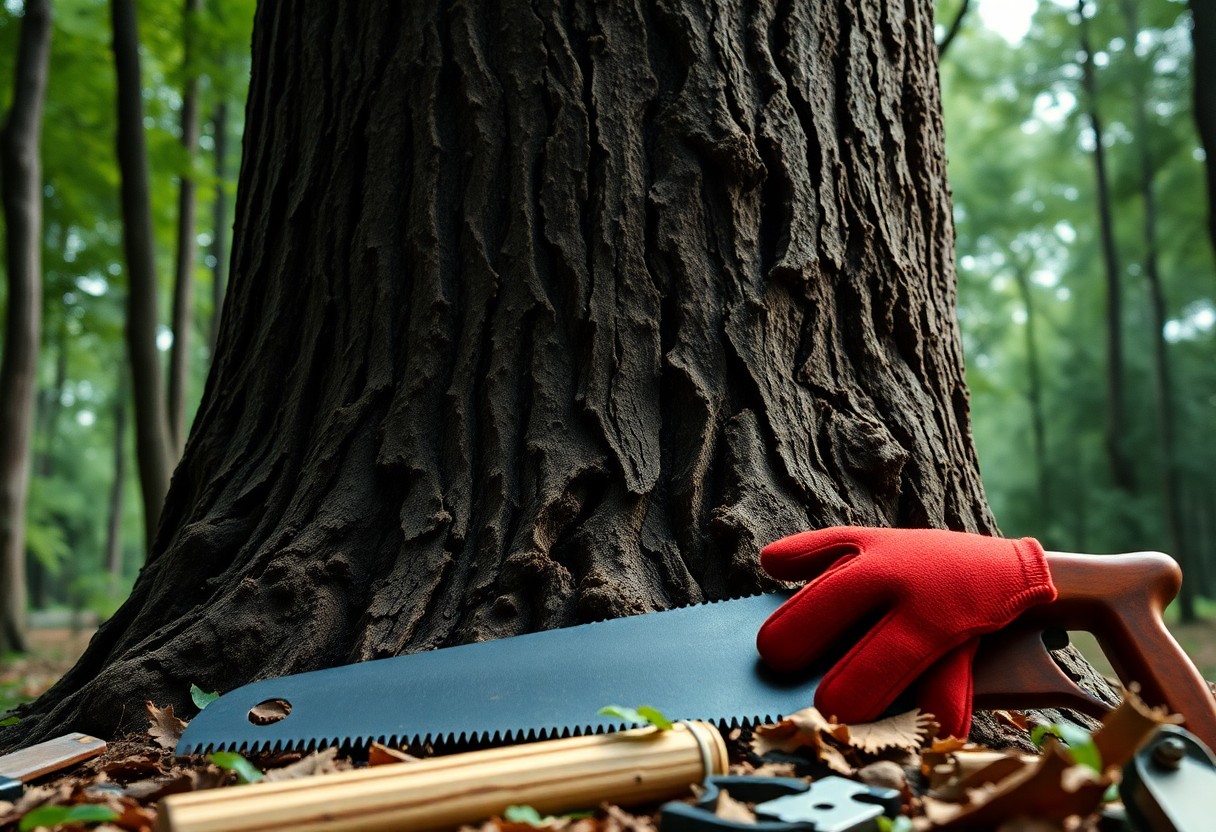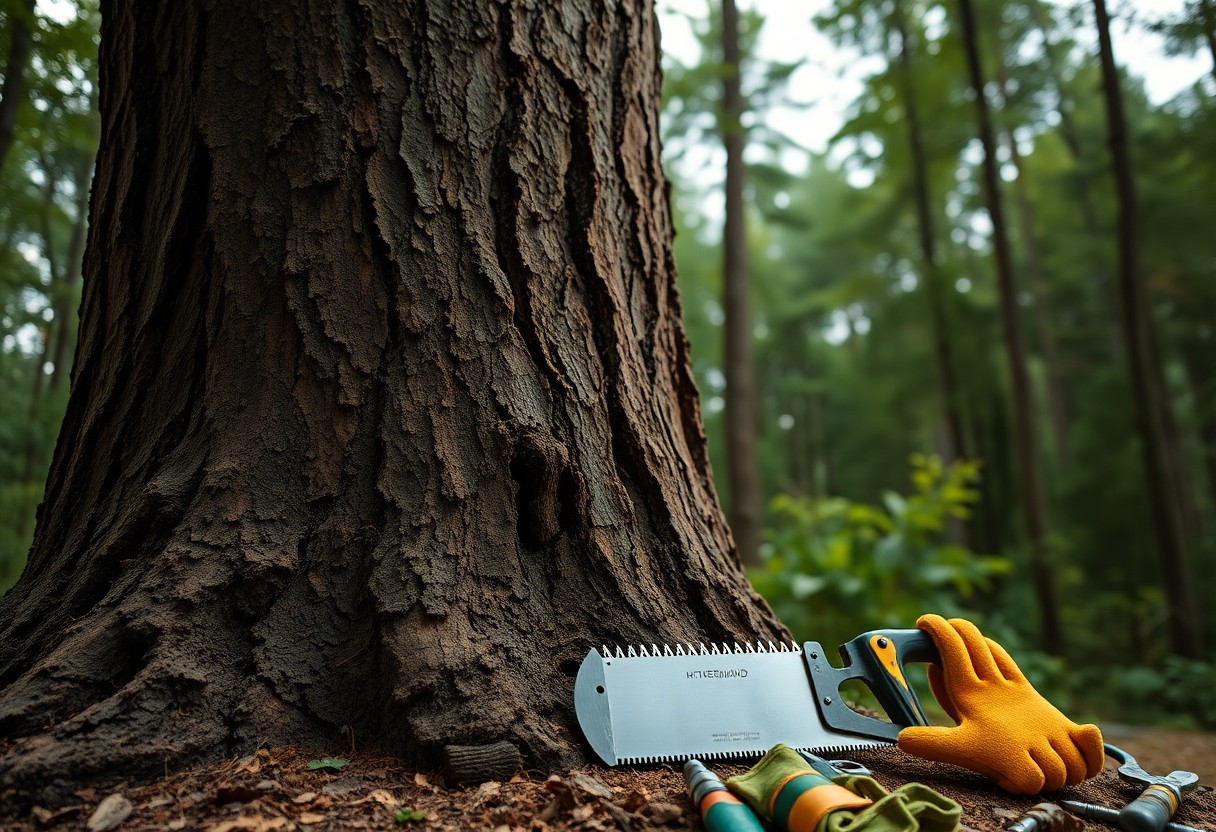There’s no denying the beauty and durability of hardwood floors, making them a favorite choice for many homeowners. To ensure that your investment remains in top condition and ages gracefully, it’s imperative to understand the best practices for care and maintenance. In this guide, you will discover practical tips and advice on how to keep your hardwood giants looking stunning while extending their lifespan. Let’s examine into the steps you can take to make your floors a lasting centerpiece in your home.

Understanding Hardwood Giants
While caring for your hardwood giants requires knowledge of their unique needs and characteristics, it also begins with understanding the different types of hardwood trees that can enhance your landscape or provide valuable resources. Each type has its distinct features, growth patterns, and applications, making it necessary for you to identify which species will thrive in your environment. For example, some hardwoods are renowned for their durability and beauty, while others boast rapid growth and excellent shade or ornamental qualities.
Types of Hardwood Trees
If you’re considering incorporating hardwood trees into your property, it’s helpful to familiarize yourself with some of the more common species. Below is a table comparing five popular hardwood varieties:
| Species | Characteristics |
| Oak | Strong, durable, and excellent for furniture making. |
| Maple | Attractive foliage, used for syrup production and flooring. |
| Cherry | Rich color, fine grain, and prized for cabinetry. |
| Walnut | Luxurious grain and color, used in high-end furniture. |
| Birch | Light wood, strong and flexible, ideal for plywood. |
- Understanding the specific needs of each species will help you provide the best care.
- Be mindful of environmental conditions such as soil type, moisture, and sunlight.
- Implement appropriate pruning techniques to ensure healthy growth.
- Fertilization may be necessary to promote optimal health and growth.
- This information is foundational for successful hardwood management.
Importance of Hardwood Investment
Hardwood trees are more than just landscape enhancements; they represent an investment in your property and the environment. Their longevity and resilience contribute to their value, and quality hardwood can significantly increase the worth of your land. This investment bears fruit in various ways: through the timber they produce, the aesthetic appeal they add, and the ecological benefits they provide to flora and fauna in your area.
Understanding the significance of hardwood investment goes beyond immediate financial returns. These trees contribute to better air quality, provide habitat for wildlife, and improve soil stability. As you invest in hardwood trees, you create a legacy of sustainable practices that benefit future generations. You position yourself as a steward of nature while enjoying the myriad advantages that hardwood giants bring to your landscape.
How to Care for Your Hardwood Trees
Some may underestimate the importance of proper care for hardwood trees, but giving them the attention they need will not only ensure their longevity but also enhance the beauty of your property. To maintain your hardwood giants, it is necessary to engage in regular monitoring and assessment of their health. You might want to check for signs of pests or diseases, and if you notice any issues, seek professional advice for effective treatment. Creating a stable environment through consistent maintenance can prevent many problems before they start.
Pruning Techniques
Careful pruning is one of the best ways to encourage healthy growth in your hardwood trees. You should aim to remove dead or diseased branches while also allowing light and air to penetrate the canopy. The optimal time for pruning is typically during the dormant season, late winter or early spring, which minimizes stress on the tree and promotes vigorous growth. When making cuts, always use clean, sharp tools to ensure smooth incisions, which helps reduce the chances of infection.
Watering and Mulching Guidelines
While hardwood trees can be quite resilient, ensuring they receive adequate water and mulch is necessary for their health and development. Newly planted trees need regular watering to support root establishment, typically about once a week depending on rainfall. After the first year, your hardwood trees may still benefit from supplemental watering during dry spells to maintain soil moisture. Applying an organic mulch layer around the base of your trees will help retain moisture, suppress weeds, and regulate soil temperature, providing a more stable environment for root growth.
It’s advisable to apply a 2-4 inch layer of mulch, making sure not to pile it against the trunk, which can lead to rot. As the mulch decomposes, it also provides necessary nutrients back to the soil. During the warm months, a careful observation of your trees will help you decide if more water is needed. Establishing a routine for watering and mulching can go a long way in ensuring the vibrancy and health of your hardwood giants for generations to come.
Essential Tips for Maintaining Hardwood Health
All hardwood species require specific care and maintenance to thrive, and you hold the key to their longevity. To ensure your hardwood remains a timeless investment, consider implementing the following vital tips:
- Regularly inspect your hardwood for signs of wear, such as scratches, discoloration, or warping.
- Keep the area around your hardwood free from excess moisture, as humidity can lead to mold and mildew.
- Utilize area rugs in high-traffic zones to protect your wood from heavy foot traffic and debris.
- Maintain a consistent indoor climate, avoiding sudden temperature changes that can stress the wood.
- Clean your hardwood floors with products specifically designed for wood to avoid damaging finishes.
Recognizing the signs of potential issues early on will guide you in taking action before problems arise, preserving the beauty and integrity of your hardwood investment.
Pest and Disease Management
If you want to keep your hardwood healthy, it’s vital to be vigilant against pests and diseases that can threaten its vitality. Common pests, such as termites and wood borers, can inflict serious damage if left unchecked. Regularly inspect your surroundings for signs of infestation, such as frass (insect droppings) or unusual holes in the wood. Equally, be on the lookout for fungal diseases like powdery mildew or root rot, which can severely affect the health of hardwood trees.
Implementing preventive measures is key to pest and disease management. You should maintain a proper watering schedule, avoiding overwatering and ensuring adequate drainage to deter fungal growth. You might also want to consider chemical or organic treatments that protect against pests, using them judiciously to safeguard the health of your hardwood while minimizing environmental impact.
Fertilization Best Practices
Even hardwood species will benefit from proper fertilization to bolster growth and resilience. Fertilizing during the growing season, typically in the spring, allows your hardwood to absorb vital nutrients when it most needs them. Opt for a balanced fertilizer with equal parts nitrogen, phosphorus, and potassium, as this blend will support healthy root development and foliage growth. Be mindful of soil quality and use a soil test to determine nutrient deficiencies, adjusting your fertilization strategy accordingly.
This proactive approach not only enhances the aesthetics of your hardwood but also contributes to its overall health and strength. A well-fertilized hardwood ultimately better withstands environmental stressors and pests, ensuring that your investment remains a source of beauty and enjoyment for years to come. Following best practices will create a nurturing environment, fostering resilient and thriving hardwood trees.

Factors Affecting Growth and Longevity
Your hardwood trees are a significant investment, and understanding the factors that affect their growth and longevity is imperative for ensuring they thrive in your landscape. Several variables come into play, including soil quality, environmental conditions, and overall tree care practices. By considering these elements, you can create a nurturing environment that promotes robust health and longevity for your trees.
- Soil quality and composition
- Water availability
- Sunlight exposure
- Pest and disease management
- Pruning and care practices
This holistic approach will not only enhance the vibrancy of your hardwood giants but also support their longevity for generations to come.
Soil Quality and Composition
For hardwood trees, soil quality and composition are vital components that affect their overall health. The right mix of nutrients, pH levels, and organic matter can significantly influence growth rates and resistance to disease. Ideally, you want to ensure that your soil is well-drained yet retains enough moisture to support root development. Testing your soil for nutrient content and pH can help you determine what amendments may be needed to optimize the growing environment.
Incorporating organic matter, such as compost or well-rotted manure, can improve soil structure and fertility, enabling your hardwood trees to establish deep, healthy root systems. Proper mulching around the base of the trees can also help maintain moisture levels while suppressing weeds that compete for resources.
Environmental Considerations
While assessing the growth potential of your hardwood giants, various environmental factors also play a significant role. Elements such as sunlight exposure, temperature ranges, and local climate conditions can all impact tree health and growth patterns. Certain species of hardwood trees may flourish better in specific environmental contexts, so it’s imperative to choose the right tree for your area. Familiarizing yourself with the native tree species to your region can provide valuable insights into what will work best in your landscape.
To ensure the long-term viability of your hardwood trees, consider how surrounding structures, other vegetation, and even human activity can influence their environment. Protecting your trees from harsh winds, excessive shade, and pollution will enable them to thrive. Additionally, monitoring weather patterns can help you anticipate and react to conditions that could impact their well-being, ensuring that your investments continue to flourish year after year.
Timing Your Care Schedule
For optimal performance and longevity of your hardwood floors, establishing a well-timed care schedule is imperative. Besides regular cleaning, different tasks should be scheduled seasonally to align with the specific needs of your wood. By being mindful of weather changes and the typical usage your floors endure, you can ensure that your investment maintains its beauty year-round. A proactive approach allows you to prevent the wear and tear that could otherwise accumulate, changing the aesthetics and durability of your floors over time.
Seasonal Maintenance Tasks
Any successful maintenance routine emphasizes the importance of seasonality. In spring, you might focus on deep cleaning and refinishing to eliminate the buildup of dirt and grime accumulated over winter months. Summer could be the time to check for sun fading and apply protective coatings if necessary. As fall arrives, inspect for any moisture risks, ensuring proper humidity levels in your home to prevent wood expansion or contraction. By winter, regular sweeping and a cautious approach to moisture control can save your floors from potential damage caused by snow and salt. This seasonal rhythm allows you to tailor your care efforts effectively.
Long-term Care Planning
Schedule a comprehensive assessment of your hardwood flooring at least once or twice a year to devise a long-term care plan. Assessments include checking for scratches, unevenness, or any signs of damage from pets or heavy furniture. Developing a plan plays a significant role in determining when to refinish your floors, which typically is needed every 5 to 10 years, depending on wear. Planning for these larger tasks helps spread out costs and keeps your hardwood in top condition, ensuring that you enjoy its timeless beauty for decades.
Maintenance of your hardwood floors extends far beyond routine cleaning, encompassing long-term strategies to ensure their health. Consider keep records of past refinishing and repairs, and adjust your care and maintenance based on your family’s specific needs. Being proactive will save you time and money, while enhancing the appearance and value of your investment in hardwood flooring.
Common Mistakes to Avoid
Unlike other gardening practices, caring for hardwood trees requires a deeper understanding of their unique needs and characteristics. One of the most common mistakes you can make is to either over-care or neglect your hardwood giants. Both extremes can lead to poor health, affecting not only the appearance of your trees but also their growth potential and longevity. Finding a balance in care is important to ensure your trees thrive and continue to provide beauty and value for years to come.
Over-Care and Neglect
The temptation to shower your hardwood trees with attention can lead you to make poor choices. Over-fertilizing or constant watering may sound like effective measures, but they can often suffocate the roots or lead to excessive growth, making your trees susceptible to pests and diseases. Conversely, neglecting your trees can be equally detrimental. Insufficient watering during dry spells or failing to remove dead or diseased branches can make your hardwood giants vulnerable to environmental stressors, ultimately diminishing their vitality.
Misidentifying Tree Needs
Misidentifying the specific needs of your hardwood trees is a prevalent issue many tree caretakers face. Each species has its own requirements for sun, soil, and nutrients. Failing to recognize these differences can hinder their growth and health. For instance, a tree species that thrives in alkaline soil might struggle in acidic conditions, while others may require ample sunlight in order to flourish. Taking the time to research and understand the specific needs of your hardwood trees is an investment in their overall health and longevity.
Avoiding misidentification begins with thorough research into the particular species you have planted. Consult local extension services, books, or reputable online resources to gather information about the native soil conditions, sunlight requirements, and watering needs. By tailoring your care routines to align with these specific needs, you’ll ensure that your hardwood giants receive the personalized attention they deserve, promoting optimal growth and health throughout their lifecycle.
Summing up
Now that you understand the importance of caring for your hardwood giants, you can appreciate the timeless investment they represent in your home. By following the recommended maintenance tips—such as regular cleaning, avoiding excess moisture, and applying appropriate finishes—you ensure that your hardwood floors remain beautiful and durable for generations. This not only enhances your living space but also adds value to your property, making your careful attention to their upkeep a rewarding endeavor.
Furthermore, your hardwood floors are more than just an aesthetic choice; they reflect your commitment to quality and sustainability. Investing in the care of these natural materials helps them age gracefully, allowing you to enjoy their warmth and beauty for years to come. By incorporating simple yet effective maintenance practices into your routine, you empower yourself to protect and preserve your hardwood giants as a lasting part of your home’s legacy.





